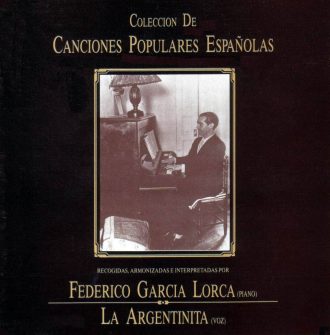
This beautiful lecture tries to describe a city, Granada, through its sounds, through the songs heard in its streets. A music that changes with the seasons, just as colors, smells or customs change. Thus, the author begins in November and moves from season to season, describing the changes that the city undergoes and how the time of year can be identified by what you hear being sung in the city. The lecture is interrupted by songs that were played on the piano and interpreted by Lorca himself at the time.
A speech that has its origin in the talk on Granada that Lorca gave for the first time in April or May 1933 in Madrid, at the Residencia de Estudiantes, with songs interpreted by La Argentinita.
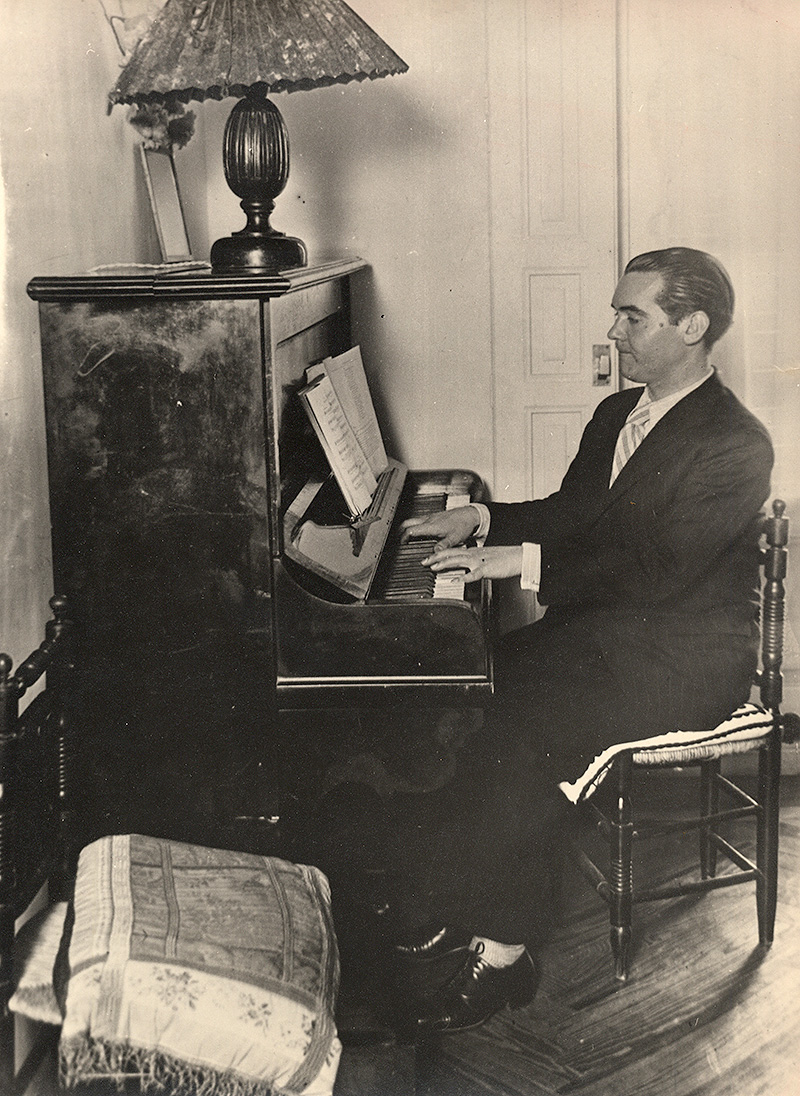
It was read for the first time on October 26, 1933 in Buenos Aires, at the Sociedad de Amigos del Arte. It was later read in Montevideo on February 9, 1934 at the Teatro 18 de Julio. The text was interspersed with songs played on the piano and sung by Lorca himself. The reading in Buenos Aires was a success, as he himself told his parents in a letter: “People were fighting to get in the door and there was such a great demand for tickets that the next one will have to be in a theater”. On February 9, in Montevideo, he sells 1,340 tickets. He gives three speeches and the success is overwhelming, both in terms of audience and box office (60% was for the author). He will give the entire amount to his father to spend (6,887 pesetas, according to Gibson; Life, passion and death of Federico García Lorca (1898-1936), Debolsillo, 2016, p. 575).
He repeated this speech in Barcelona, on December 19, 1935, for L’Associació de Música de Cambra, at the Casal del Metge, before giving his first public reading of Divan del Tamarit.
It was first published in Mario Hernández, Francisco García Lorca, Federico and his world, Alianza Publishing House, 1981 (it was Francisco García Lorca who discovered the text).
After the lecture in Barcelona he said in an interview that he was going to send the document, with the corresponding press releases, to the mayor of Granada, so that he could see who was the true representative in the world of his city, implying that he was not sufficiently appreciated there (surely referring to those in charge of the city at the time).
Lorca speaks of Granada as a city of two rivers, a city of two valleys. The Genil river, “crowned with poplars” and the Dauro river, “crowned with lilies”. Curiously he comes from a town also bathed by two rivers, the Genil and Cubillas.
Isabel García Lorca recalls in her book Recuerdos míos (My Memories) how at the end of the street where they first lived in Granada, the Acera del Darro, the two rivers converged. The Darro is an underground river, from Plaza Nueva until it flows into the Genil. When the family lived in Acera del Darro, the river was not yet covered in this last stretch. Lorca will dedicate a juvenile poem to them El Dauro and the Genil (Lorca prefers, instead of Darro, the word Dauro, closer to the supposed etymology of the word, related to the gold that could be found in this river).
The two rivers are very different for Federico, the Genil is related to joy, its tree being the poplar, while the Darro is related to death, its tree being the cypress. Granada has this culture of water (rivers, fountains, spouts, cisterns…) because of its Arab past. Lorca is the poet of water not only because of Granada, but because of his origins in the village of Fuente Vaqueros, also called La Fuente (The Fountain).
Two promenades “to sing” are mentioned in this conference, the Salón and the Alhambra, and one “to cry”, the Paseo de los Tristes (The Promenade of the Sad Ones), which he calls Alameda de los Tristes.
From the Plaza del Humilladero, which Federico also mentions in his text (the place where it is said that the Catholic Monarchs entered the city), near the confluence of the two rivers, the Paseo del Salón begins. It is the boardwalk of the 19th century, where the well-to-do families used to meet and where the girls used to show off their intentions of finding a boyfriend. At the end of the Paseo del Salón is a preserved building that was a ballroom in the 19th century (hence the name of the boardwalk in Spanish) and today is preserved as a municipal library.
The Alhambra is the Arab monument that presides over the city and reminds us of its past. The forest that surrounds it and its location on a hill give it a romantic image that has always accompanied it.
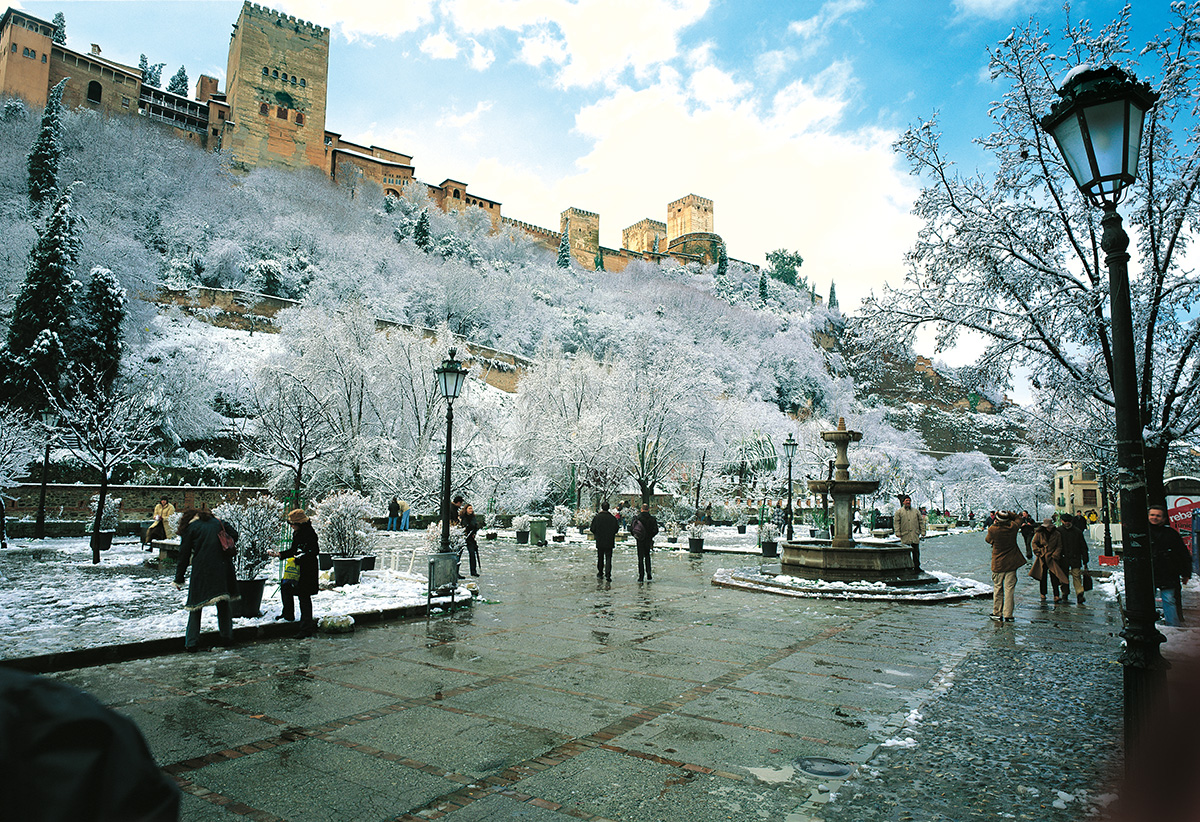
At its feet, the Paseo de los Tristes, parallel to the Darro River, from which you can see the majestic Alhambra. It was given that name because it was the way to the cemetery, located next to the Alhambra.
Constant elements in the description of the city are its Sierra (Mountain) and Vega (Valley). Sierra Nevada, which can be glimpsed from almost anywhere in the city and which changes with the seasons. La Vega, at the foot of the mountains, are the fields that surround the city with its villages and that nowadays has been reduced by half due to the construction of roads and buildings. In his speech, he mentions some villages of this valley like Armilla, Santa Fe and Atarfe. Federico himself is a child of one of these villages and his work is nourished by all the landscape, folklore and the peasant way of speaking of this Vega of Granada.
The Tomasas nuns mentioned in the speech are the nuns of the Convent of Santo Tomás de Villanueva, convent of the Tomasas (they made a cake called ‘torta real de las Tomasas’).
It is a convent of Augustinian Recollect nuns erected in 1636. It is in the Albaicín and is one of the many convents with its church that are scattered throughout the city. Granada has eighty bell towers, Federico says at the beginning of his speech. One of the sounds of this city would indeed be the bells, precisely because of the number of convents and churches that there are, the result and symbol of the Christian repopulation after its takeover in 1492.
The author mentions, for example, the bells of San Juan de Dios (St. John of God), a church located on the street of the same name with the homonymous hospital, dedicated to one of the saints (who lived from 1495 to 1550) who has left the most evidence of his existence in Granada, founder of the order of the Hospitaller Brothers of Juan de Dios. The church has two beautiful towers with green and white tiles and is a baroque jewel. “From May to June, Granada is an incessant bell tower. Students can’t study. In Plaza de Bibarambla the bells of the Cathedral, underwater bells with seaweed and clouds, do not let the peasants speak. The bells of the San Juan de Dios church fill the air with a baroque altarpiece of wailing and bronze clanging […]”.
Other places that the poet mentions in his speech are the Jewish quarter, the Realejo quarter, the Plaza de Bibrambla, the Elvira Street… The latter appears in some of Lorca’s texts, for example in the popular couplet in Doña Rosita la soltera (Doña Rosita the Spinster): “Granada, la calle Elvira,[Granada, Elvira Street] /donde viven las manolas [where the well-dressed women live], /las que se van a la Alhambra, [those who go to the Alhambra] /las tres y las cuatro solas” [three and four alone].
At the end of Elvira Street there is an Arabic arch which is also mentioned in one of his texts (Gazelle of the morning market, from Divan del Tamarit: “Por el arco de Elvira [“Through the arch of Elvira] / quiero verte pasar, [I want to see you pass], / para saber tu nombre [to know your name] / y ponerme a llorar…” [and start crying…”]. Elvira Street was a very important road in Granada until the 19th century, before the construction of the Gran Vía de Colón. It was an exit from the city to the Vega in Arab times. The German traveler Hieronymus Münzer, when he left two years after the capture of the city by the Catholic Monarchs, found that the land in front was occupied by a large Muslim cemetery (Gibson; Poet in Granada, Ediciones B, Barcelona, 2015, pp. 128-129). At the end of Elvira Street, on the corner of Plaza Nueva, lived Emilia Llanos, a great friend of the poet.
The speech mentions the Plaza Larga of the Albaicín. It is in this neighborhood that Lorca sets his most Granada-like play, Doña Rosita the Spinster, in a house, the dwelling he considered ideal in this city. These houses have an interior garden protected by walls from the outside. They are interior paradises hidden from the gaze of the people, although they usually have a viewpoint that allows you to look outside and often have a beautiful view of the Alhambra.
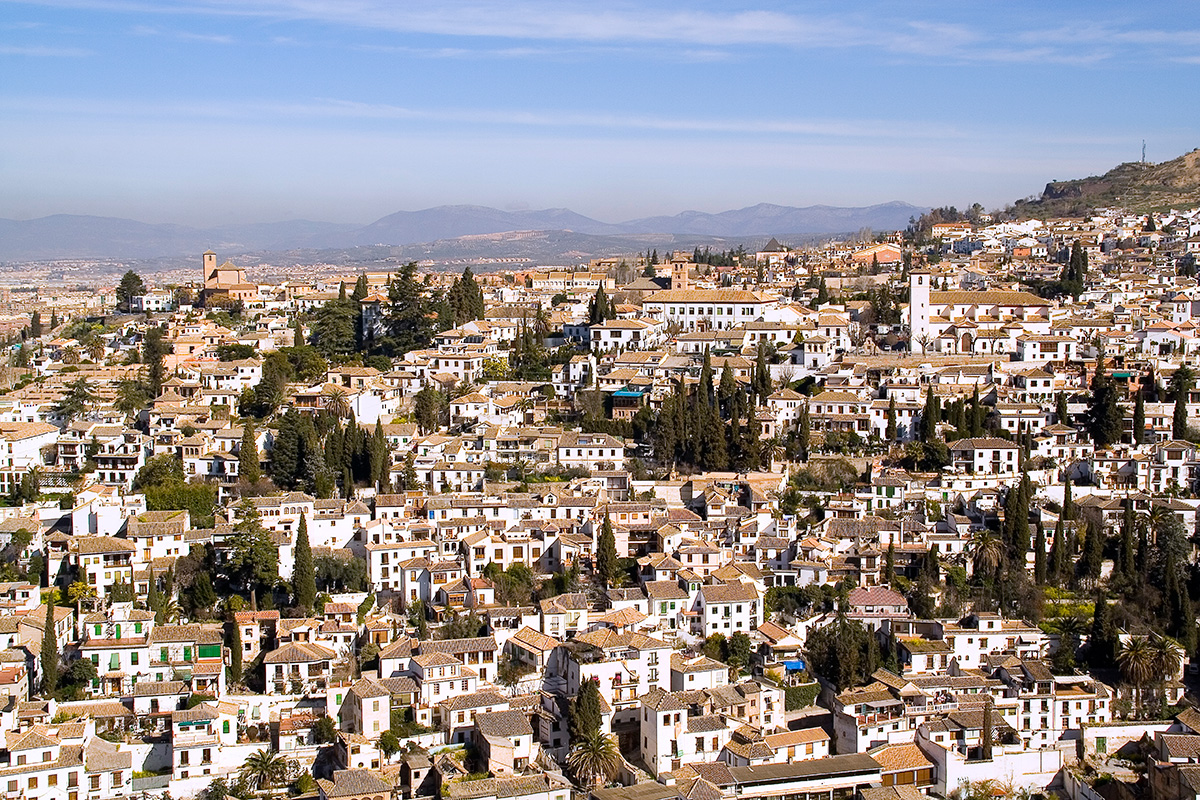
From the Alhambra you can also enjoy a beautiful panoramic view of the Albaicín which, “seen at night, gives the impression of being a low sky”. This is how Lorca originally intended to title his book Suites. In the Albaicín is the house of Soto de Rojas, Carmen de los Mascarones, where some members of the Ateneo de Granada inaugurated a commemorative tile drawn by Hermenegildo Lanz shortly after he read his speech on the author, in fall of 1926.
Lorca also alludes to Sacromonte quarter, “We all have to tiptoe along this red dirt road, lined with prickly pears, to a meeting grouped together in a bend of the hill. They dance and sing. They accompany themselves with the guitar and castanets, and also play pastoral instruments, tambourines and triangles. They are the people who sing the “roas” and the “alboreás”, the “cachuchas” and this “zorongo” that has influenced Falla’s music so much”. Sacromonte has been the neighborhood of Granada inhabited by the gypsies since the 15th century and it may be that for Federico it represents the survival of the spirit of the city before the Takeover.
Reference to “the barrels bring the new wine from the coast (costa)”. In Granada the metonymy “un costa” (a glass of coast) is used in reference to the local wine.
Puerta Real (where Lorca places several “zambombas” (typical Christmas music instrument) shops) marks a confluence of several streets, at the end of the Acera del Darro and the Acera del Casino, Puerta Real de España. Nowadays these “zambombas” stalls are still frequent when Christmas is approaching, usually sheltered in the arcades of Ganivet Street.
The Cerro del Aceituno, mentioned by Lorca in this speech, is the hill where the hermitage of San Miguel (St. Michael) is located, a figure to whom Lorca dedicated one of his gypsy ballads. San Miguel was a challenge to the bourgeoisie of Granada. It is part of the pilgrimage that on September 29 was celebrated on the hill of San Miguel or Aceituno (behind the Albaicín) and in the hermitage dedicated to the archangel.
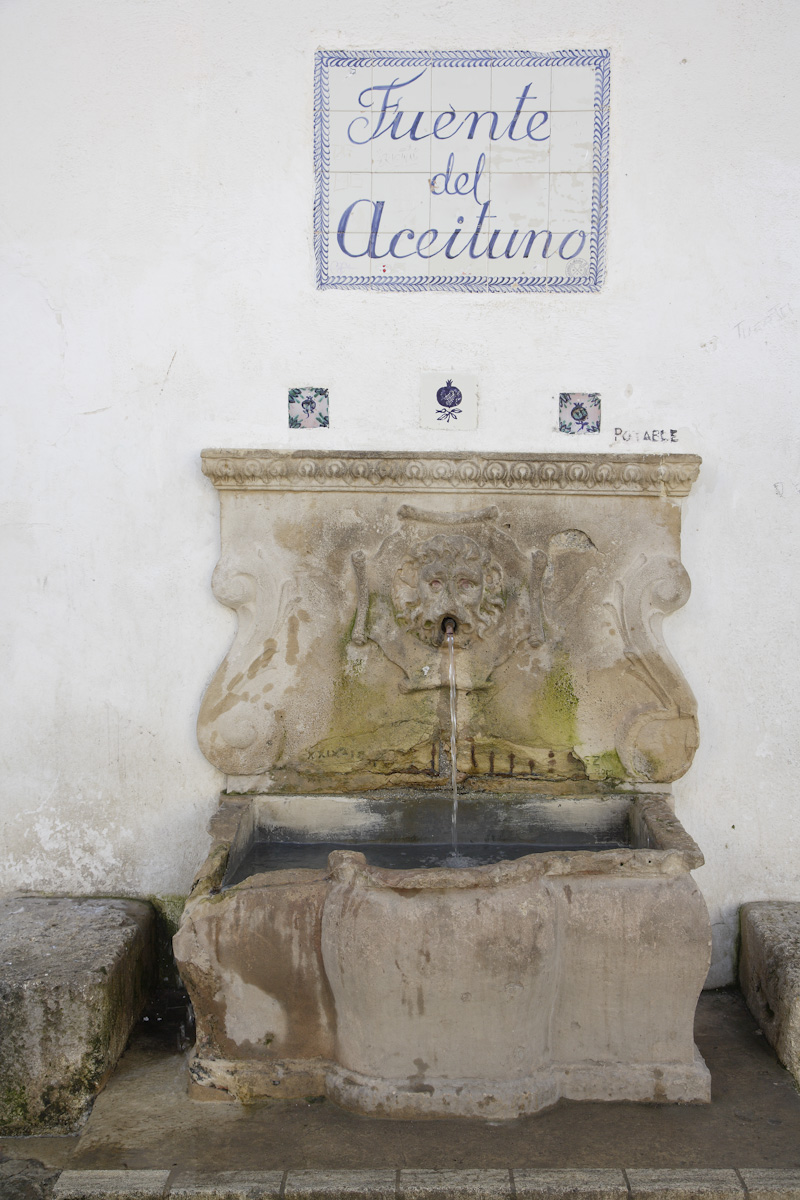
The cult to the saint is in the popular songs. In the poem there are allusions to the pilgrimage and to the custom that existed of giving sunflowers or chestnuts to lovers on this day, as well as to the carving of the saint (from 1675, by Bernardo Francisco de la Mora), an androgynous image that gives rise to the description in the romance of a kind of gay patron saint of Granada. In this speech, Lorca takes us up this hill to listen to the buzz of the city.
Audio recording of How a city sings from November to November, by Juan Echanove
Dramatized reading of How a city sings from November to November. By Juan Echanove
Spanish National Library. Three leaves: popular carol. Romance of pilgrims (La Argentinita accompanied by Federico García Lorca on the piano)
Spanish National Lbrary: The four muleteers (La Argentinita accompanied by Federico García Lorca on the piano)